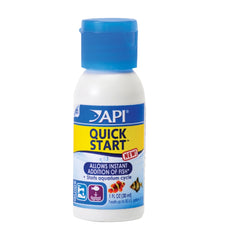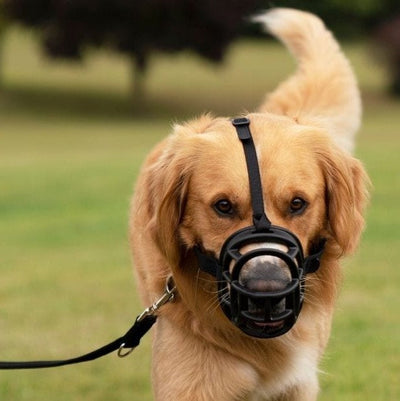 Are you a beginner in the hobby of fishkeeping and eager to set up your own aquarium? Look no further! In this comprehensive guide, we will walk you through the essential steps of properly cycling a fish tank. With the right knowledge and approach, you can ensure a healthy and thriving environment for your aquatic friends.
Are you a beginner in the hobby of fishkeeping and eager to set up your own aquarium? Look no further! In this comprehensive guide, we will walk you through the essential steps of properly cycling a fish tank. With the right knowledge and approach, you can ensure a healthy and thriving environment for your aquatic friends.
Properly cycling a fish tank is a crucial step that many beginners overlook, but it is essential for the well-being of your fish. During the cycling process, beneficial bacteria develop in the tank, helping to break down harmful ammonia and nitrite into less toxic nitrate. This process establishes a stable and healthy ecosystem that is capable of supporting fish.
In this guide, we will explain the different methods of cycling a fish tank, including fishless cycling and fish-in cycling for Australian aquariums. We will also provide tips on choosing the right fish for your tank, managing water parameters, and maintaining the optimal conditions for your fish to thrive.
Whether you're a first-time aquarium owner or looking to enhance your fishkeeping skills, this beginner's guide will equip you with the knowledge you need to successfully cycle your fish tank and create a beautiful and healthy fish tank .
The importance of cycling a fish tank
Properly cycling a fish tank is a crucial step that many beginners overlook, but it is essential for the well-being of your fish. During the cycling process, beneficial bacteria develop in the tank, helping to break down harmful ammonia and nitrite into less toxic nitrate. This process establishes a stable and healthy ecosystem that is capable of supporting fish.
Cycling a fish tank is like establishing the foundation of a house. Without a solid foundation, the structure will crumble. Similarly, without a properly cycled tank, the fish will be exposed to harmful toxins that can be detrimental to their health. By understanding and implementing the cycling process, you are creating a safe and comfortable environment for your fish to thrive.
Understanding the nitrogen cycle
To fully comprehend the importance of cycling a fish tank, it is essential to understand the nitrogen cycle. The nitrogen cycle is a biological process that occurs in every aquarium. It involves the conversion of toxic ammonia, which is produced by fish waste and uneaten food, into less harmful substances. This process is crucial for maintaining optimal water quality and ensuring the well-being of your fish.
The nitrogen cycle consists of three key stages. First, ammonia is converted into nitrite by beneficial bacteria known as nitrosomonas. Nitrite is still toxic to fish, but it is a step closer to becoming less harmful. In the second stage, another group of beneficial bacteria, called nitrobacter, converts nitrite into nitrate. Nitrate is the least harmful form of nitrogen and can be effectively managed through regular water changes.
The following blog about Ammonia is well worth reading as well: Ammonia Levels in Your Aquarium: What You Need to Know for Your Fish's Health
How to cycle a fish tank using the fishless method
The fishless cycling method is recommended for beginners as it eliminates the risk of harming fish during the cycling process. This method involves the introduction of a source of ammonia into the tank to initiate the growth of beneficial bacteria. Here's a step-by-step guide to cycling a fish tank using the fishless method:
1. Set up your aquarium: Start by setting up your aquarium with all the necessary equipment, such as a filter, heater, and substrate. Fill the tank with dechlorinated water and add any decorations or plants.
2. Add a source of ammonia: To kick-start the nitrogen cycle, you will need to add a source of ammonia. This can be done by using fish food, pure ammonia, or even adding a small piece of raw shrimp. The goal is to create an environment that promotes the growth of beneficial bacteria.
3. Test water parameters: Regularly test the water parameters, including ammonia, nitrite, and nitrate levels, using a reliable test kit. This will help you track the progress of the cycling process and ensure that the levels are within safe ranges.
4. Monitor the cycle: As the beneficial bacteria develop, you will notice a rise in ammonia levels, followed by an increase in nitrite levels. This is an indication that the cycle is progressing. It is important to be patient during this stage as it can take several weeks for the cycle to complete.
5. Complete the cycle: Once the ammonia and nitrite levels have dropped to zero, and nitrate levels have risen, the cycling process is complete. At this point, you can perform a water change to lower the nitrate levels and make the tank suitable for fish.
Step-by-step guide to cycling a fish tank with fish
 If you prefer to cycle your tank with fish, it is crucial to choose the right fish species that can tolerate the cycling process. Some hardy fish, such as danios or guppies, can withstand the cycling process better than others. Here's a step-by-step guide to cycling a fish tank with fish:
If you prefer to cycle your tank with fish, it is crucial to choose the right fish species that can tolerate the cycling process. Some hardy fish, such as danios or guppies, can withstand the cycling process better than others. Here's a step-by-step guide to cycling a fish tank with fish:2. Add the correct water conditioners: Treat your water to remove chlorine and chloramines. Use an established beneficial bacterial water treatment for aquariums and follow the dosage recommended on the bottle. Remember to add aquarium salt to the water to ensure healthy slime coating and gill function (even in freshwater aquariums).
3. Choose the right fish: Select hardy fish species that can tolerate the cycling process. Avoid delicate or sensitive fish during this stage, as they may not survive the fluctuations in water parameters. Our knowledgeable staff are happy to assist you with your selection.
4. Introduce the fish: Start by adding a small number of fish to the tank. It is important not to overcrowd the tank during the cycling process, as this can lead to increased stress and ammonia spikes.
5. Monitor water parameters: Regularly test the water parameters using a reliable test kit to ensure that ammonia and nitrite levels do not reach dangerous levels. Perform water changes as necessary to maintain a healthy environment for the fish. Learn more about How to change the water in your fish tank here.
levels. Perform water changes as necessary to maintain a healthy environment for the fish. Learn more about How to change the water in your fish tank here.
6. Gradually add more fish: As the cycling process progresses and the beneficial bacteria establish, you can gradually add more fish to the tank. Monitor the water parameters closely and make adjustments as needed.
Testing aquarium water parameters during the cycling process
Throughout the cycling process, it is crucial to monitor the water parameters to ensure that the tank is progressing towards a stable and healthy state. Here are the key parameters to test and their ideal ranges:
- Ammonia (NH3/NH4+): Ideally, the ammonia level should be zero. During the cycling process, you may experience a spike in ammonia levels, which is normal. However, it should decrease as the beneficial bacteria establish.
cycling process, you may experience a spike in ammonia levels, which is normal. However, it should decrease as the beneficial bacteria establish.
- Nitrite (NO2-): Like ammonia, nitrite levels should ideally be zero. During the cycling process, you will observe an increase in nitrite levels, followed by a decrease once the beneficial bacteria convert it into nitrate.
- Nitrate (NO3-): Nitrate levels should be kept below 40 ppm (parts per million) in a well-maintained aquarium. Regular water changes are necessary to keep the nitrate levels in check.
keep the nitrate levels in check.
Testing the water parameters regularly will help you identify any issues and take appropriate action to maintain a healthy environment for your fish.
Common mistakes to avoid when cycling a fish tank
Cycling a fish tank can be a complex process, and beginners often make some common mistakes. Here are a few mistakes to avoid during the cycling process:
1. Adding too many fish at once: Overcrowding the tank with fish can lead to increased stress and higher ammonia levels. It is important to introduce fish gradually to ensure that the beneficial bacteria can keep up with the waste production.
2. Overfeeding the fish: Excess food can result in higher ammonia levels, disrupting the cycling process. Feed your fish only the amount they can consume within a few minutes and remove any uneaten food.
3. Neglecting water changes: Regular water changes are crucial for maintaining optimal water quality. They help remove accumulated nitrate and other pollutants, ensuring a healthy environment for the fish.
By avoiding these common mistakes, you can ensure a smoother and more successful cycling process for your fish tank.
How long does it take to cycle a fish tank?
 The time it takes to cycle a fish tank can vary depending on several factors, including the chosen cycling method, tank size, and the presence of live plants. Generally, the fishless cycling method takes around 4-6 weeks to complete, while the fish-in method may take longer due to the need for more gradual introductions of fish.
The time it takes to cycle a fish tank can vary depending on several factors, including the chosen cycling method, tank size, and the presence of live plants. Generally, the fishless cycling method takes around 4-6 weeks to complete, while the fish-in method may take longer due to the need for more gradual introductions of fish.
It is important to be patient during the cycling process and resist the temptation to add fish prematurely. Rushing the process can lead to harmful ammonia and nitrite spikes, putting the fish at risk. Remember, the well-being of your fish should always be the top priority.
Adding fish to a cycled tank
Once your tank has completed the cycling process and the water parameters are stable, you can start adding fish to your aquarium. It is crucial to choose fish species that are compatible with each other and suitable for your tank's size. Here are a few tips to consider when adding fish to a cycled tank:
1. Research fish compatibility: Ensure that the fish species you choose are compatible with each other in terms of behavior, size, and water parameters. Some fish may be territorial or aggressive, which can lead to conflicts in the tank.
2. Introduce fish gradually: Avoid adding all the fish at once. Instead, introduce a few fish at a time, allowing the tank to adjust to the increased bioload. This will ensure that the beneficial bacteria can keep up with the waste production.
3. Monitor fish behaviour and health: Watch for any signs of stress or disease in the newly added fish. Symptoms such as loss of appetite, abnormal swimming behaviour, or discolouration may indicate a problem. Take immediate action to address any issues and quarantine sick fish if necessary.
By following these guidelines, you can ensure a smooth transition for your fish into their new home and create a harmonious community within your aquarium.
Maintenance tips for a healthy aquarium
Congratulations on successfully cycling your fish tank! Now that you have created a stable and healthy environment for your fish, it is important to maintain it properly. Here are a few maintenance tips to keep your aquarium thriving:
1. Regular water changes: Perform regular water changes to remove accumulated nitrate and other pollutants. Aim for a water change of about 20-25% every 1-2 weeks, depending on the tank's bioload.
2. Monitor water parameters: Continuously monitor the water parameters to ensure that the ammonia, nitrite, and nitrate levels are within safe ranges. Test the water regularly using a reliable test kit.
3. Maintain a consistent feeding schedule: Feed your fish a balanced diet and avoid overfeeding. Only provide the amount of food they can consume within a few minutes to prevent excessive waste production.
4. Clean the tank and equipment: Regularly clean the tank and equipment, such as filters and heaters, to remove any debris or buildup. This will help maintain optimal water quality and prevent any issues.
as filters and heaters, to remove any debris or buildup. This will help maintain optimal water quality and prevent any issues.
By following these maintenance tips, you can ensure the long-term health and well-being of your fish, and enjoy a beautiful and thriving aquarium for years to come.
Creating a healthy environment for your fish can be a rewarding and enriching experience. By properly cycling your fish tank, you are laying the foundation for a healthy and vibrant aquatic ecosystem. Whether you choose the fishless or fish-in method, understanding the nitrogen cycle and maintaining optimal water parameters are key to success. Remember, patience and diligence are essential throughout the cycling process. Enjoy the wonders of fishkeeping!
© weknowpets 2024





